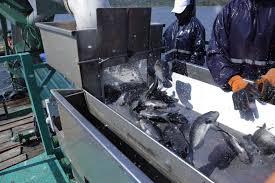The handling, processing, and marketing of fish products are essential complementary functions in food production systems. Women traditionally play a significant role in these activities. In many developing countries, women dominate the markets, either as buyers or sellers of food.
For most, marketing is a secondary activity providing the only source of necessary cash income. The marketability of fish products is a crucial factor in aquaculture development. Furthermore, processing and marketing offer the most significant employment opportunities within the aquaculture industry.
Read Also: 7 Medicinal Health Benefits of Daffodils (Narcissus Plant)
Fish Handling Techniques
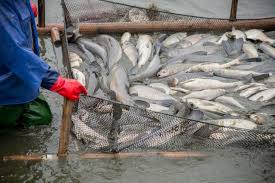
Pond harvests, especially in developing countries like Nigeria, are labor-intensive. Families and other villagers are often involved in reducing labor costs. Men typically seine the pond, while women collect the remaining fish with baskets. Smaller fish are kept for home consumption, while larger fish are sold. Those involved in the harvesting process receive a share of the production.
Well-managed farms, especially in Asia, often practice multiple stocking and harvesting. This technique involves handling and restocking fish that are not yet marketable.
Multiple harvests provide women with more opportunities, allowing them to sell smaller quantities of fish more easily. In contrast, large-scale farms often utilize different marketing channels, with women traders more frequently found further down the marketing chain.
The timing of pond harvests is critical to aligning supply with demand. Fresh fish need to be delivered to customers quickly, as they cannot be stored for extended periods.
In Asia, harvested fish are kept in fish holding cages for up to one day before being sent to the market. While men typically handle transportation to wholesalers, hotels, and supermarkets, smaller private retailers may lack access to adequate facilities like aerated containers.
Challenges in Fish Transportation
Transporting fresh fish, especially live fish, presents significant challenges. Fresh fish are preferred by consumers but are difficult to store and transport. Local transportation may involve baskets or containers carried by hand, bicycles, or small vehicles.
In riverine areas along the Niger and Benue rivers, as well as the Lagos Lagoon, boats are often used to transport fish. This practice is also common in countries like Bangladesh, China, Guinea Bissau, and Benin.
For successful transportation of live fish, several conditions must be met:
i. The proximity of ponds to the market to minimize handling and transport time.
ii. Early morning harvests to take advantage of cooler temperatures.
iii. Markets equipped with ice facilities or tanks with aeration and drainage systems.
Transporting live fish to remote markets is complex and requires investments in trucks equipped with fish holding cages, pumping systems, and aeration devices. Long-distance transport of fresh fish often requires cooling systems or ice, which can be cost-prohibitive for small-scale producers. Women typically play a minor role in fish transport due to limited access to modern transportation methods.
Fish Processing Methods
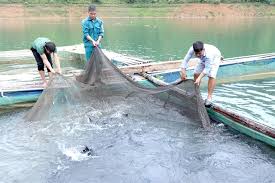
Women dominate fish processing on small-scale, cooperative, and industrial levels. These small-scale enterprises are flexible, responding to the supply of fresh fish and consumer preferences. Despite being small, these enterprises significantly contribute to the economy by providing employment and income for many women.
The processing methods used depend on several factors:
i. Consumer preferences
ii. Availability and costs of materials
iii. Technical knowledge
iv. Time required for processing
v. Price of the final product
vi. Storage facilities
vii. Market conditions
In extensive and semi-intensive production systems, fish are processed when they cannot be sold fresh, or when cold storage is unavailable. Salting, smoking, drying, and fermenting are common methods carried out by women, often near or inside their homes.
Home processing allows women to combine their duties with domestic responsibilities, and young girls frequently assist their mothers.
Economic pressure to shift from subsistence production to commercial production has reshaped women’s roles. Small-scale enterprises are increasingly replaced by modern processing plants focused on export markets.
This shift has reduced the marketing opportunities available to women, driving many to seek employment in fish processing industries, often in low-paying positions. Seasonal fluctuations in fish supply also disproportionately affect women, who tend to be employed as casual laborers.
Read Also: Bacterial Canker (Stone fruit trees): Description, Damages Caused, Control and Preventive Measures
Fish Marketing and Women’s Role
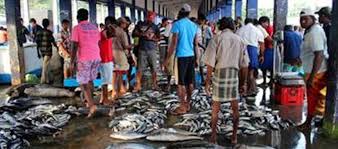
Various factors limit women’s participation in marketing, including restricted time, social and cultural constraints. In rural areas, women rely on marketing for income. Often, customers become aware of pond harvesting through informal networks and buy fish directly from the pond.
The majority of customers are women, purchasing fish for home consumption or small-scale local marketing. Proximity to markets allows women to become more involved in selling aquatic products.
The Catfish Farmers Association of Nigeria is working to improve fish marketing by creating sales outlets in cities, ensuring that fish reach consumers at affordable prices. Despite these efforts, most women remain part-time or seasonal sellers, handling their husbands’ crops or buying from various sources.
Fishmammies, women who buy fish directly from landing sites, play a significant role in financing fishing operations and receive shares in the fish harvest. In some cases, fish are sold through auction, while in others, women have fixed relationships with fishermen and pay after the fish is sold.
Price Determination in Fish Markets
Fish prices are influenced by several factors, including transport costs, production costs, supply and demand, competition, processing techniques, and the variety of fish. Price fluctuations are common, driven by availability, quality, and consumer purchasing power.
Typically, prices are lower during harvest and rise as supplies dwindle. Rural consumers generally have the most purchasing power just after the agricultural harvest, while urban consumers tend to spend more at the beginning of the month after payday.
Intensive aquaculture systems, which target urban markets, often result in higher market prices due to greater capital investment. Road construction around fish farms has made landing sites more accessible to traders, although many women lack the resources to modernize their operations. Some women have adapted to these changes by becoming money lenders, helping to extend their trade.
Problems in Post-Harvest Activities
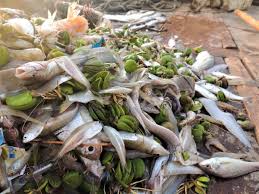
Post-harvest fish activities face several challenges, including limited access to resources, credit, transport, and poor infrastructure. Processing and marketing, often overlooked in policy-making, suffer from a lack of support, especially at the small-scale level. Women, in particular, face additional constraints due to domestic responsibilities, limited access to land and credit, and time limitations.
There is a lack of proper analysis of women’s role in fish production, processing, and marketing. New systems or technologies often increase labor for women while giving most benefits to men.
Insufficient consultation with the intended users has led to the inappropriateness of some technologies and infrastructure. Moreover, small-scale processing and marketing is highly competitive, not cooperative, making it challenging for women to protect themselves against commercial traders.
Improving Management Procedures
More attention must be given to the role of women in aquaculture and fish marketing. Small-scale fish handling, especially in extensive and semi-intensive systems, requires greater focus in terms of training, credit support, and quality control to prevent fish spoilage. Improved transportation and market facilities can further enhance women’s participation in these activities.
Fish preservation and processing technologies that cater to the needs of women should be promoted, ensuring that training programs do not disrupt their daily responsibilities. Women’s access to credit, transport, and markets should be prioritized to enable them to thrive in aquaculture and fish trading.
In conclusion, equal access to credit and participation in market development is crucial for consolidating women’s position as traders. Examples from countries like China and Malaysia show the effectiveness of trade associations in organizing the purchasing, distribution, and storage of fish products, benefiting both producers and traders.
Do you have any questions, suggestions, or contributions? If so, please feel free to use the comment box below to share your thoughts. We also encourage you to kindly share this information with others who might benefit from it. Since we can’t reach everyone at once, we truly appreciate your help in spreading the word. Thank you so much for your support and for sharing!
Read Also: Relationship Marketing Process and Approaches to the Study of Marketing
Frequently Asked Questions
We will update this section soon.

